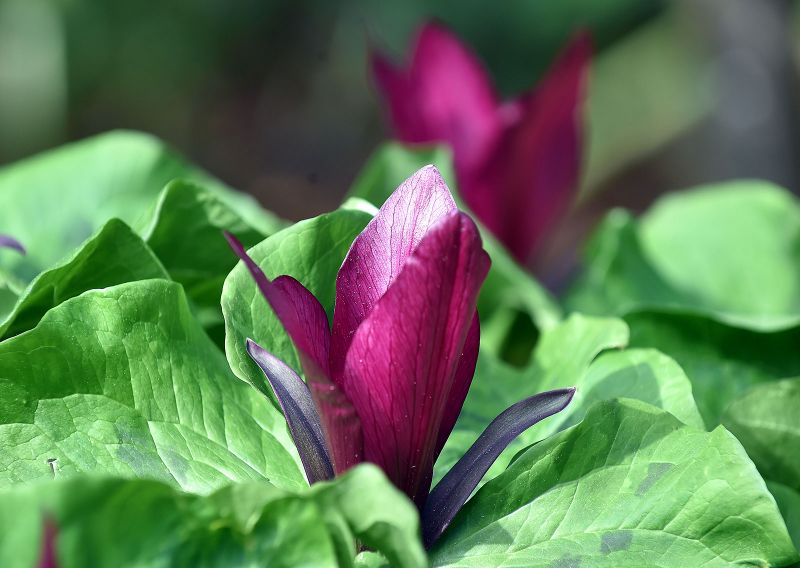Trillium a Choice Plant
This article was first published on 28 Sep 2016.

Trillium chloropetalum
Photo by the Otago Daily Times
If you could give a plant personality then Trillium chloropetalum would be sophisticated. The striking colour and plant parts arranged in groups of three create a point of difference from many other plants.
Trillium chloropetalum emerges from its underground rhizome with the surprising speed of spring perennials. Simple morphologically but somewhat complicated botanically, Trillium does not have true stems or leaves above ground. Instead it has a scape which functions as a stem and a whorl of three large green bracts which function as leaves. The bracts have an attractive marbling created by different shades of green and are capable of photosynthesis. The flowers grow above the bracts on each scape. They have three long narrow petals and vary from white through to rich wine-red forms.
Located in the lower botanic garden camellia collection, main drive, the wine-red form of Trillium chloropetalum near the various pinks of the camellias delivers some gorgeous colour combinations. This woodland perennial grows to about 50cm high and enjoys a partly shaded position.
Because the trilliums’ scapes support the photosynthesising bracts as well as the flowers, picking removes their chance to produce food and will weaken the clump. Trilliums are also very susceptible to foot traffic, which can easily kill young establishing plants.
I once heard a Trillium enthusiast, when asked “What is the best time to divide a Trillium” – reply, “Whenever you are offered a piece!” The next best time is to wait till their growth has died down at the end of the summer.
Marianne Groothuis is the camellia and theme plant collection curator


